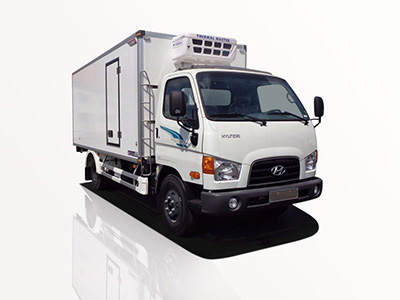The world of trucking is constantly evolving, and among its latest innovations is the rear engine truck. This design offers unique advantages and challenges that can significantly impact the transportation industry. In this article, we will explore everything you need to know about rear engine trucks, including their benefits, designs, practical uses, and tips for maintenance. Whether you’re a trucking professional or just curious about the mechanics, this comprehensive guide aims to provide valuable insights.
What is a Rear Engine Truck?
A rear engine truck is a vehicle with its engine positioned at the rear instead of the front. This design is particularly popular in certain types of vehicles, including buses and some specialized trucks. But why would manufacturers choose this unconventional layout? Let’s delve into the key aspects of rear engine trucks.
History of Rear Engine Trucks
The concept of rear engine trucks dates back to the early 20th century, with buses leading the way. Manufacturers like Mercedes-Benz pioneered this design, allowing for better weight distribution and passenger comfort. Gradually, the design spread to other types of vehicles, including certain models of trucks. Understanding this history is crucial, as it sheds light on the ongoing evolution of truck design.
Key Features of Rear Engine Trucks
- Improved Weight Distribution: The rear engine layout shifts the weight over the rear wheels, enhancing traction.
- Increased Cabin Space: Placing the engine at the rear frees up space in the cabin for better comfort and usability.
- Efficient Cooling: The design generally allows for better airflow around the engine, leading to improved cooling and performance.
Advantages of Rear Engine Trucks
Rear engine trucks come with several benefits that can make them an attractive option for businesses. Here are some key advantages:
1. Improved Maneuverability
With the engine positioned at the rear, the front of the truck is lighter, enabling it to make sharper turns. This is particularly beneficial in urban settings where space is limited.
2. Enhanced Stability
The rear-engine layout offers better stability, even when loaded. Trucks are less likely to tip over while navigating uneven surfaces.
3. Lower Noise Levels
Keeping the engine at the rear helps to reduce noise in the cabin, creating a more comfortable experience for the driver.
Common Types of Rear Engine Trucks
While rear engine trucks are not as common as traditional designs, several types exist. Here are a few notable examples:
1. Garbage Trucks
Many garbage trucks adopt a rear engine design for better maneuverability in tight spaces. The engine’s position allows for better visibility during operations.
2. Buses
Public transportation buses frequently utilize rear engines, providing more space for passengers and improving fuel efficiency.
3. Specialty Trucks
Many specialty vehicles, such as fire trucks and tow trucks, use rear engine configurations for enhanced performance and functionality.
Rear Engine vs. Front Engine Trucks
| Feature | Rear Engine Trucks | Front Engine Trucks |
|---|---|---|
| Maneuverability | Higher | Moderate |
| Stability | Higher | Variable |
| Noise Levels | Lower | Higher |
| Engine Access | More Accessible | Less Accessible |
Considerations for Choosing a Rear Engine Truck
When deciding on a rear engine truck for your business needs, consider the following:
1. Payload Capacity
Evaluate the weight capacity the truck can handle. Rear engine trucks typically offer unique distribution but check individual models for specifics.
2. Maintenance Costs
Understanding maintenance costs is vital. Rear engine trucks may have different service requirements compared to their front-engine counterparts. It’s important to budget accordingly.
3. Fuel Efficiency
While rear engine trucks can be more fuel-efficient in certain applications, it’s best to analyze specific models to make an informed decision.
Best Practices for Maintenance of Rear Engine Trucks
1. Regular Inspections
Perform routine inspections of the engine, brakes, and other essential components. Look out for leaks or wear and tear that may need attention.
2. Keep the Engine Clean
A clean engine operates more efficiently. Regularly wash the engine compartment to avoid dirt accumulation that can lead to overheating and other issues.
3. Oil Changes
Regular oil changes are essential for engine health. Follow the manufacturer’s guidelines for the frequency of oil changes.
Real-World Applications of Rear Engine Trucks
Various industries have found innovative ways to utilize rear engine trucks effectively. Here are some examples:
1. Urban Waste Removal
As cities become denser, garbage collection requires agile vehicles. Rear engine trucks provide the maneuverability necessary for navigating tight urban streets.
2. Public Transportation
Buses with rear engines accommodate more passengers and allow for efficient routing, greatly benefiting public transport systems in metropolitan areas.
3. Emergency Services
Fire trucks and ambulances benefit from the unique layout of rear engine trucks, providing the necessary power and responsiveness in emergencies.
FAQ About Rear Engine Trucks
1. Are rear engine trucks more expensive to maintain compared to front engine trucks?
Not necessarily. While some components may require different maintenance, overall costs depend on the specific model and its design.
2. Can rear engine trucks operate in all types of terrain?
Rear engine trucks perform well in urban environments and some off-road conditions, but their effectiveness in rugged or extremely uneven terrains may be limited.
3. What is the average lifespan of a rear engine truck?
With proper maintenance, rear engine trucks can last over 15 years, similar to front engine models. Regular upkeep is key to maximizing lifespan.
4. How do I choose the right rear engine truck for my business?
Assess your specific needs, such as payload capacity, frequency of use, and terrain. Consulting with a dealer or industry expert can also provide valuable insights.
5. Are rear engine trucks more fuel-efficient than traditional trucks?
In some scenarios, they can be more fuel-efficient due to better aerodynamics and weight distribution. However, this varies by model and application.
6. Is training required for drivers transitioning to rear engine trucks?
While not mandatory, familiarization training is recommended due to the different mechanics and handling characteristics compared to traditional trucks.





